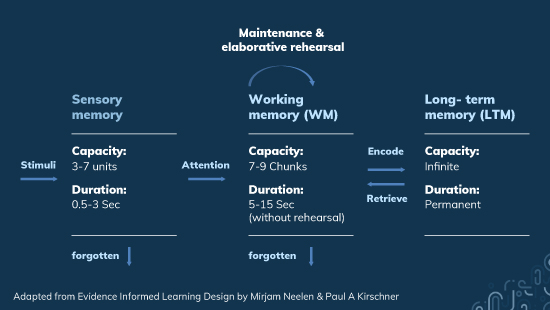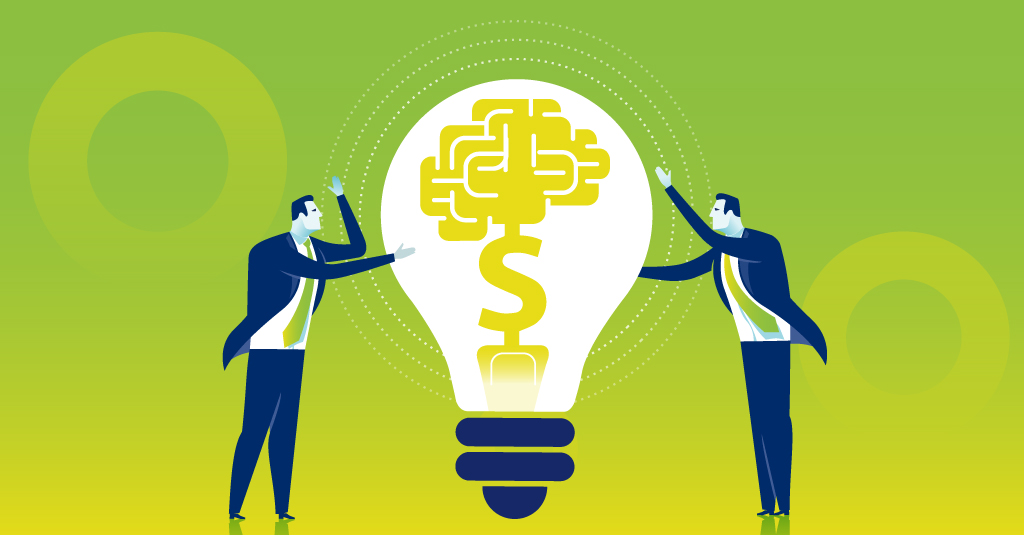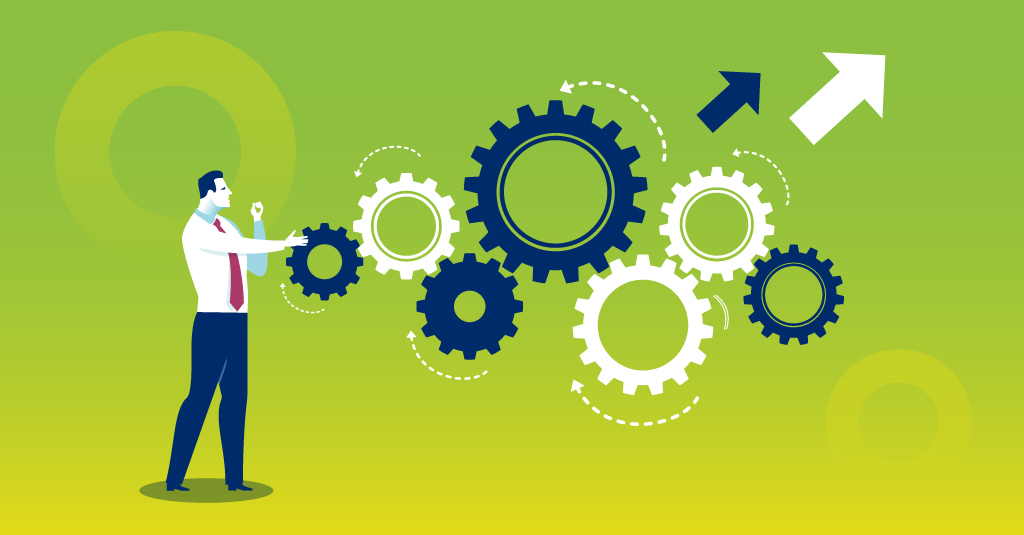Learning is like breathing and we have been learning all our lives, mostly unconsciously though and sometimes consciously. L&D professionals attempt to influence that conscious learning bit in alignment with our roles and desired business outcomes. However, quite often they seem to lose focus on ‘learning’ while attempting to speed up things or while focusing too much on technologies that promise to magically make us all proficient instantly. As a result, a lot of L&D-created learning solutions either don’t deliver learning or result in learning transfer.
Memory is the foundation of learning
First things first – memory is the absolute starting point if we have to understand learning. The figure below captures the essential process of remembering. We are bombarded with thousands of stimuli every moment (like the sound of the fan or AC in the room). We pay attention to only some – that either stand out (siren of an ambulance on the street) or matter to us, the rest is lost from our sensory memory. That is based on our perceptions which in turn are driven by our motivations (mostly primal motivations). We rehearse (repeat) the information in our working memory (like an OTP, Wi-Fi password, or phone number) till we use it and then it is lost from our working memory. Some of those items are either emotional enough (stories, movies) for us or are rehearsed with an intention (well-designed eLearning should to do that) to encode (or consolidation, which is known to be enhanced by sleep too) to the long-term memory.

So how do we define learning
Learning is about retrieving information from long-term memory when a situation demands. Especially in the workplace context, learning does mean something you can leverage to do certain tasks. In essence, it goes beyond just remembering and includes application of the information or knowledge from long-term memory.
Here’s how some authors define learning:
Brown, Roediger, McDaniel in their book ‘Make it stick’ say…
“…when we talk about learning we mean acquiring knowledge and skills and having them readily available from memory so you can make sense of future problems and opportunities.”
Julie Dirksen in her book ‘Design for how people learn’ says…
“Successful learning involves encoding and retrieval – memory in and memory out. Remembering is the necessary first step, but you need to be able to retrieve, manipulate, combine, and innovate with the information you remember.”
Connie Malamed has listed 10 definitions of learning if you’re interested.
Learning versus training
It is not uncommon to find the two being equated, which they are definitely not. Training is what L&D provides to employees in an organization. But learning is what each individual person takes away from the training. Additionally, learning is also what people acquire from many different modes/sources and not just from prescribed training programs.
This belief of equating learning with training is particularly dangerous as it reduces the role of L&D to providing training and then not bothering if people have learned or not, or if they have indeed learned the right knowledge and skills. It also leads to wrong measures – bums in seats, hours of training completed, costs saved between classroom and elearning modes, etc. Sometimes your staff may feel it is a way of putting the ball in their court and shifting the responsibility by providing ANY training to essentially tick the box.
Further differentiating between teaching and learning, Michael Allen in his book ‘Michael Allen’s Guide to e-Learning’ says…
“You cannot learn someone.” “…you can teach someone but you cannot learn someone – in recognition of the fact that learning is an internal, personal, and ultimately individual act. It takes energy to learn – one’s own energy.”
Motivation provides that energy. Motivated learners will find their way to learning, especially with all the resources we have available to us at a click and also numerous knowledgeable connections we have within and outside the workplace.
David Ausubel in the preface to his book ‘Educational Psychology: A Cognitive View’ says…
“If [he] has to reduce all of educational psychology to just one principle, [he] would say this: The most important single factor influencing learning is what the learner already knows. Ascertain this and teach him accordingly.”
Source – Wikipedia
Learning is something very personal and everyone learns uniquely from a given learning material or learning activity, depending on their own previous knowledge and experiences. So from a given training program, different people will effectively have different learning outcomes. From a learning design perspective, it is important to recognize the differences between learners – most common being novices and experienced learners. Providing the same learning solution to them either frustrates novice learners or bores the experienced ones. Personalization of instruction (or of learning material) is hence essential to make it relevant and meaningful to all learners.
Durable learning
Not all learning may be durable. For instance, when using some performance support or a job aid, you are mostly using your short-term memory, and your performance in that moment is not an indication of durable learning.
Brown, Roediger, McDaniel in their book ‘Make it stick’ say…
“Practice at retrieving new knowledge or skill from memory is a potent tool for learning and durable retention. This is true for anything the brain is asked to remember and call up again in the future – facts, complex concepts, problem-solving techniques, motor skills.”
To make learning durable, retrieval practice is needed. Learning is stronger if a considerable amount of effort is put into retrieval practice and it is not taken lightly. Repeated retrieval makes learning more durable and also helps build knowledge that can be retrieved more efficiently and applied in varied situations. Testing, reflection, spacing, and interleaving are some ways we can enhance the effects of retrieval.
The topic of retrieval practice deserves a separate blog, stay tuned.
To conclude, memory is the foundation of learning and learning is what we retrieve from our long-term memory to apply in a specific situation. Learning is personal to each individual, guided by their existing knowledge and experience. Motivation is the energy we need for learning and retrieval practice is needed to make learning durable, which is better when effortful.
If you wish to have a one on one chat, please drop a note at elearning@upsidelearning.com.



















